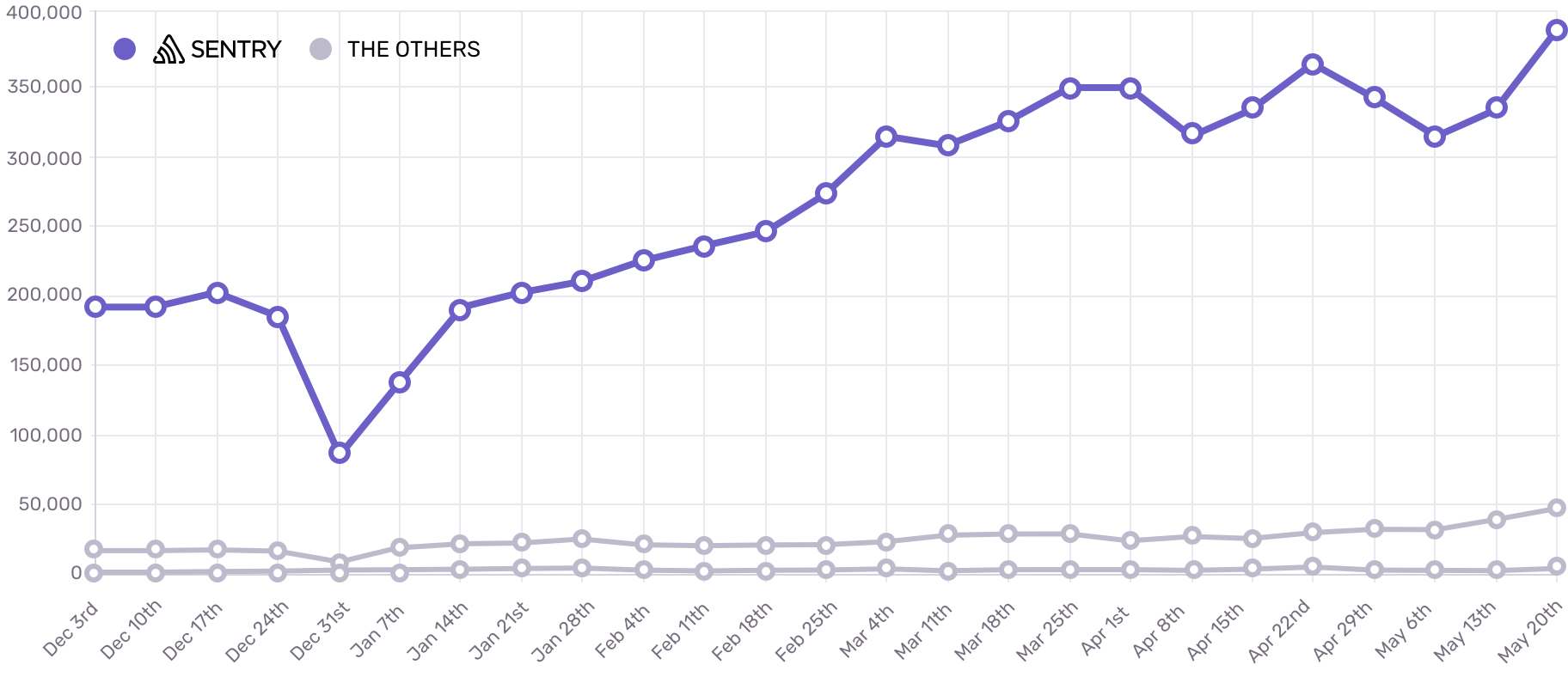Sentry Raises $16 Million Series B from NEA and Accel
We recently raised an additional $16 million in funding from our partners at NEA and Accel. What are we going to do with these additional funds? Great question!
For a long time Sentry has had a rigid, singular focus: given an application error, discover everything a developer needs to know about it and inform the team as quickly as possible. We started in a small community — the Django web framework — and over time expanded our technology to support dozens of other platforms, including browser JavaScript and mobile applications.

Growth of Sentry in the JavaScript community
Today marks a turning point for Sentry. With the launch of Sentry 9, we’ve centered our attention on the true root cause of most errors: code changes. The launch includes several features built around the concept of deriving ownership, including explicit owners (not all that different than GitHub’s .gitowners) as well as a new feature we’re calling Suspect Commits. It’s our opinion that we can give you all of the debug information in the world, but none of that will compare to being able to quickly identify when and where an issue was introduced.
With the additional funds, we’re going expand Sentry’s capabilities into other sets of problems that affect software teams. Application concerns are sometimes isolated to a single error, but often are much wider reaching, and many times don’t even generate traditional errors. With that in mind, Sentry intends to take the same set of core principles and ideas that have made our error monitoring so successful and tackle these other problems in what we’re describing as APM for Developers (more on that in a future post).
What does that actually mean? Early in my career, I experienced an extreme version of one of these incidents — an issue that didn’t actually trigger an error. What we saw was a huge increase in traffic to a specific endpoint with no explanation as to why. That endpoint was an advertising display unit, and there are very few legitimate reasons you’d see a measurable increase in click-through rates. The consequences here can be fairly drastic, like getting suspended or banned from platforms like Google’s AdWords. Suffice to say, when your business is built on advertising, you take this very seriously.
Later this year Sentry will launch new products and features which will help continue on the same original mission: peace of mind.
After a lot of investigation, we determined that we had introduced a display bug — a CSS change — which was making an advertising unit invisible, and people were accidentally clicking it as it appeared to be empty space. We found out this was only affecting Internet Explorer, which is why none of our team has spotted the issue ourselves. With the right kinds of data points we would have been able to easily spot this anomaly, and while we might not be able to say the exact reason for the behavior, we would be able to give you ample corollary symptoms: Internet Explorer and a set of commits. These kinds of stories are why we believe Sentry’s mission is so important if technology is going to continue to move quickly.
Later this year Sentry will launch new products and features which will help continue on the same original mission: peace of mind. We’re going to maintain our focus on “what did I break,” but as illustrated, that’s not always going to be as simple as an error. While we don’t want to show our hand just yet, we hope you’re as excited as we are to change the status quo of application monitoring. Maybe we’ll even get to a point where we can prevent bugs from reaching your users in the first place!
A big thank you to all of our supporters (and Open Source contributors) over the years — we wouldn’t be here without you.
If any of this resonates with you, we’re looking to expand our teams in San Francisco and Vienna. We’re nearly 70 strong and growing! Take a look at careers at Sentry, and learn more about the team.



